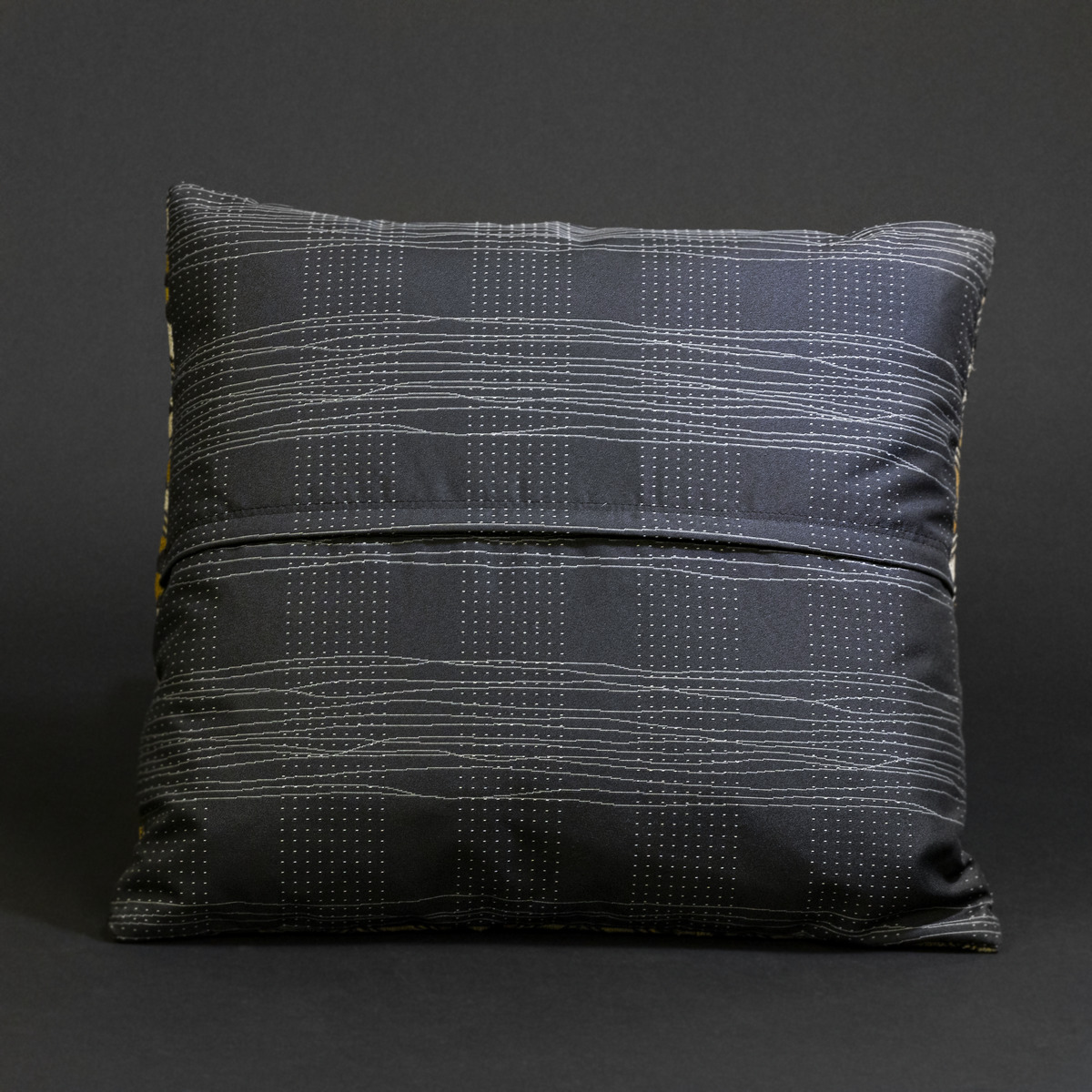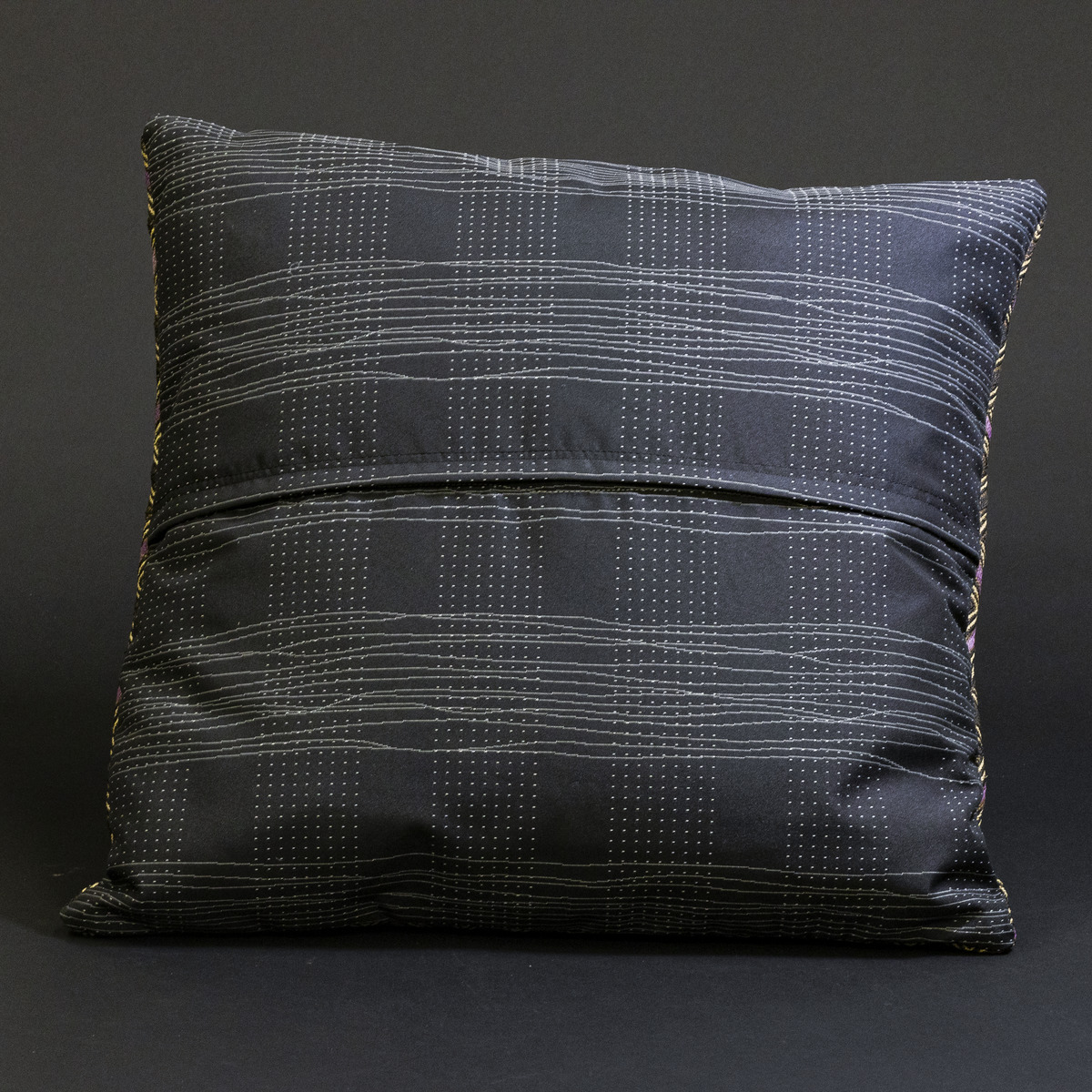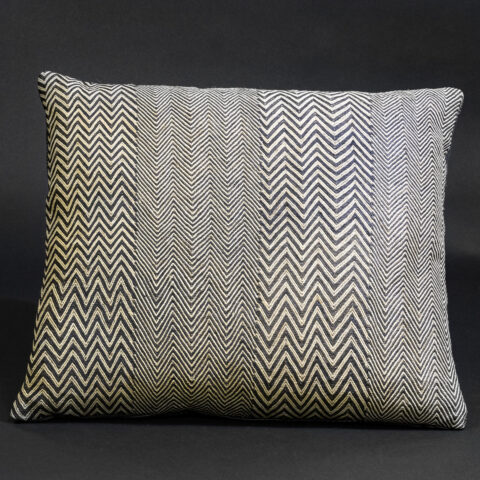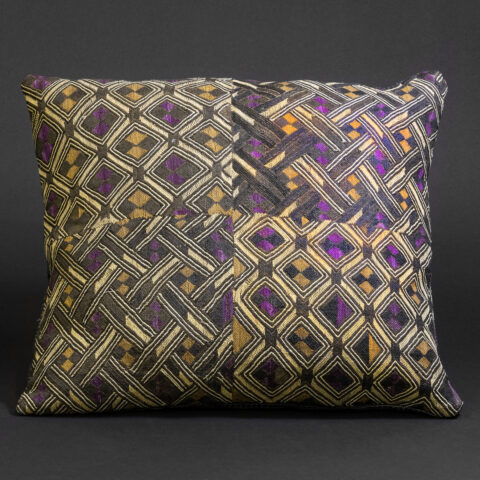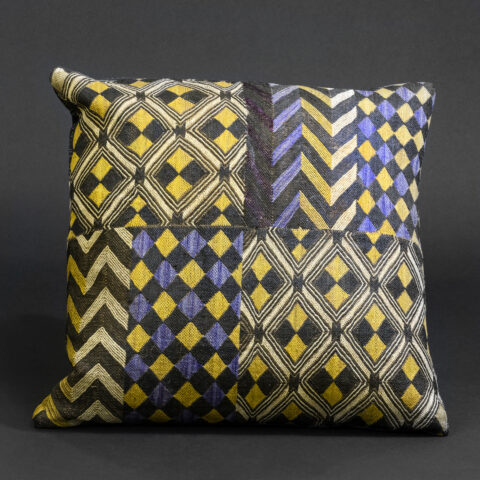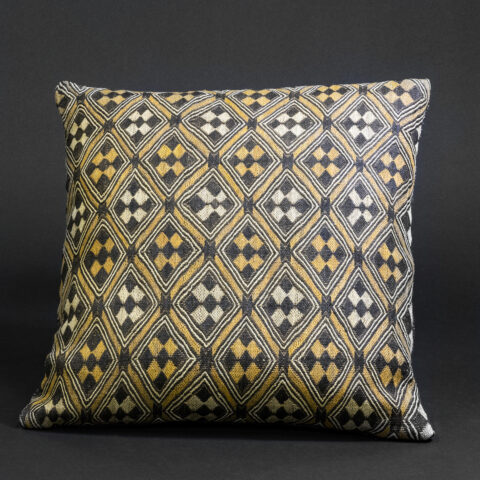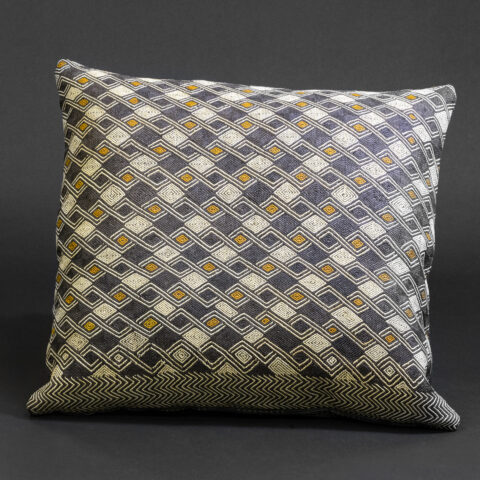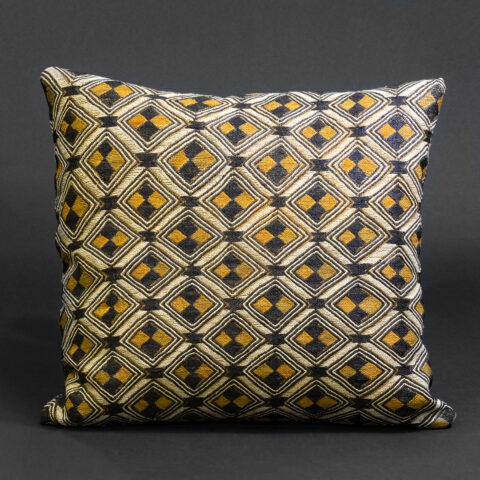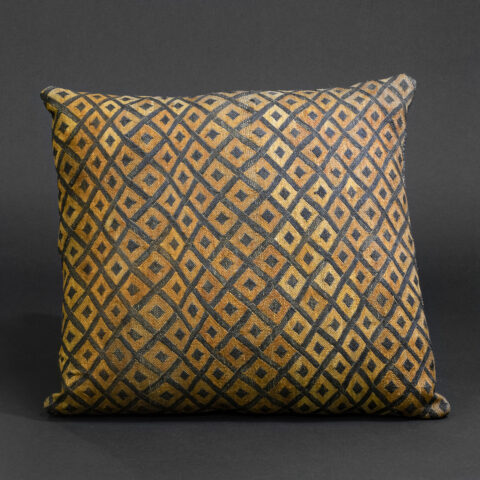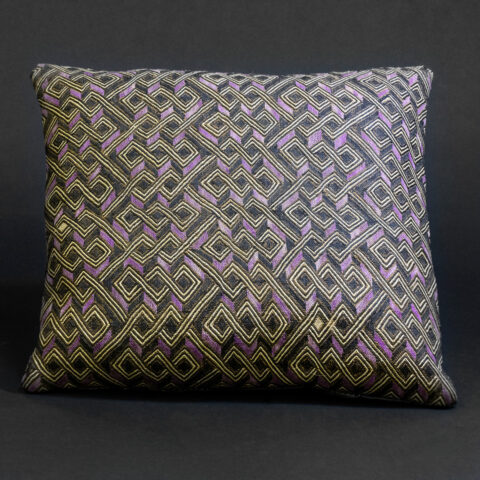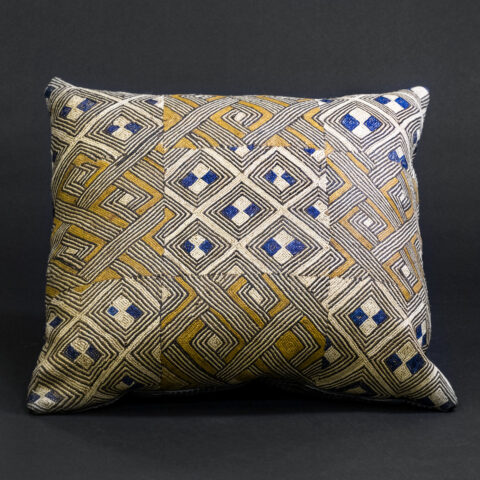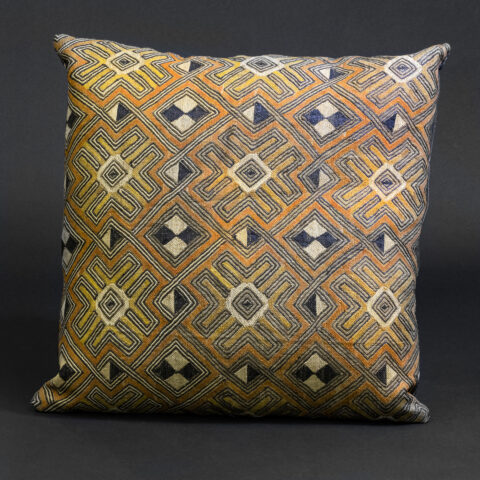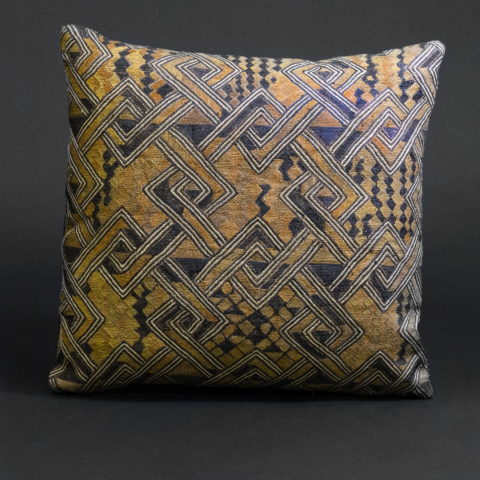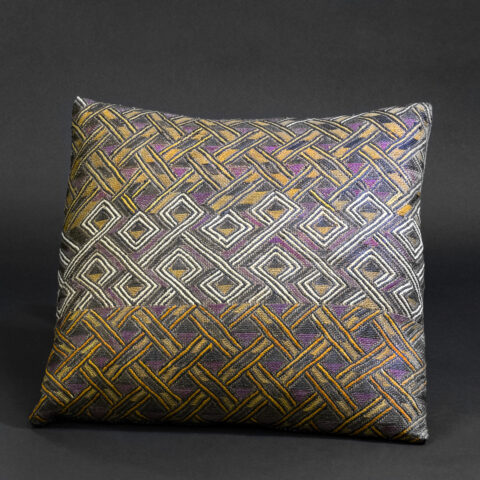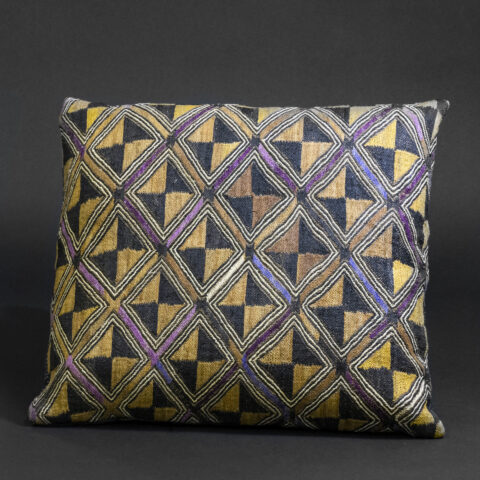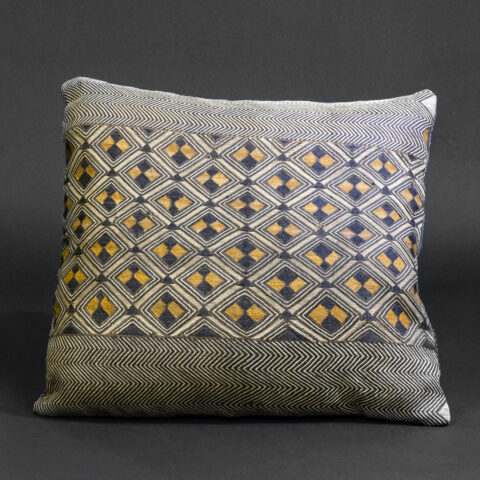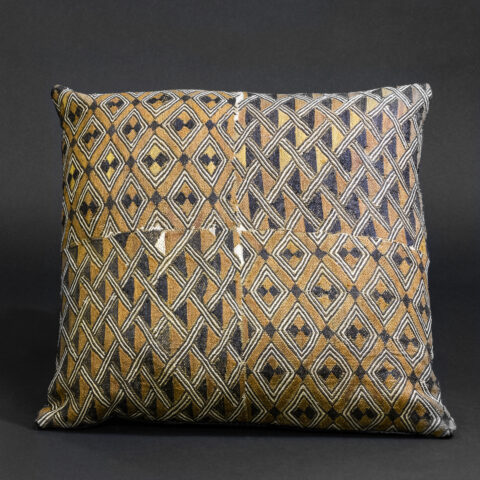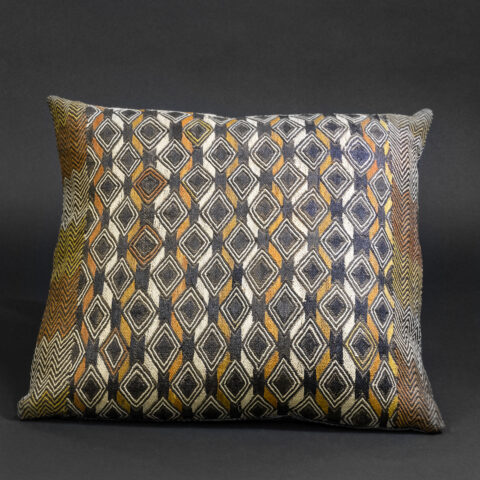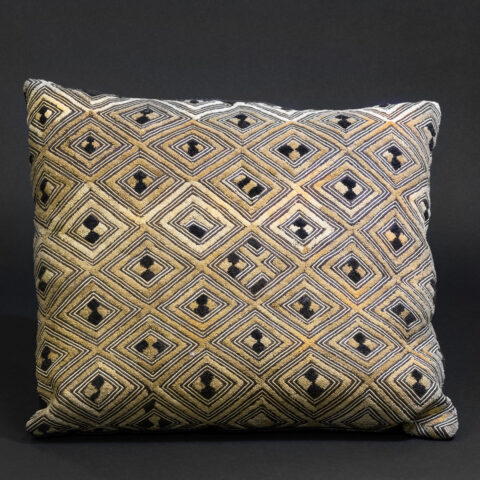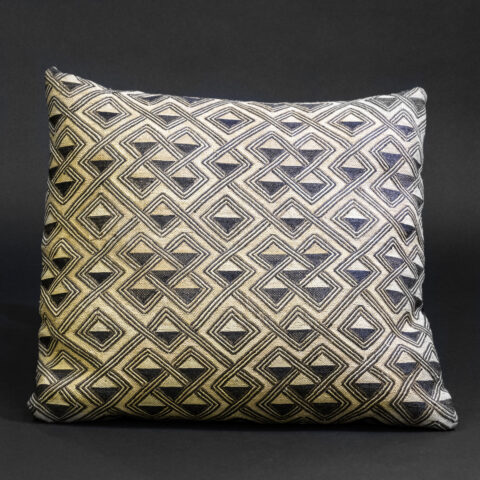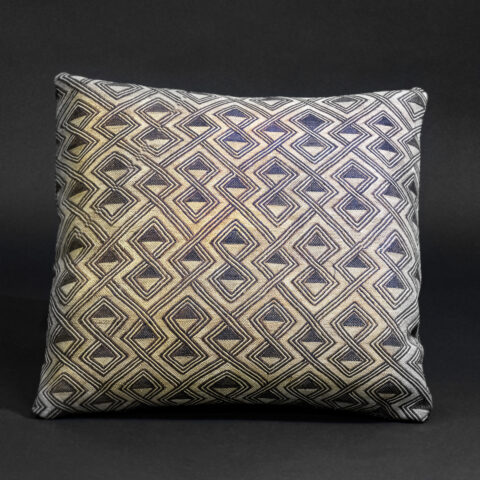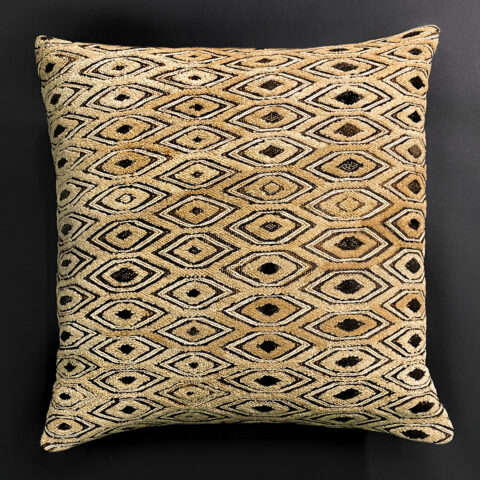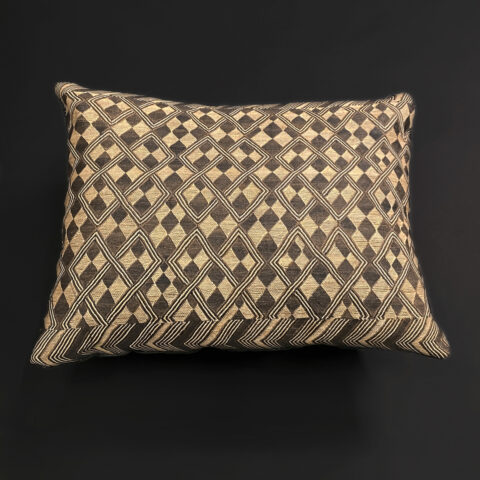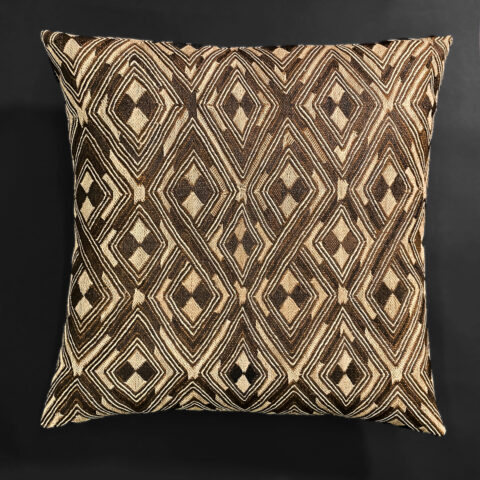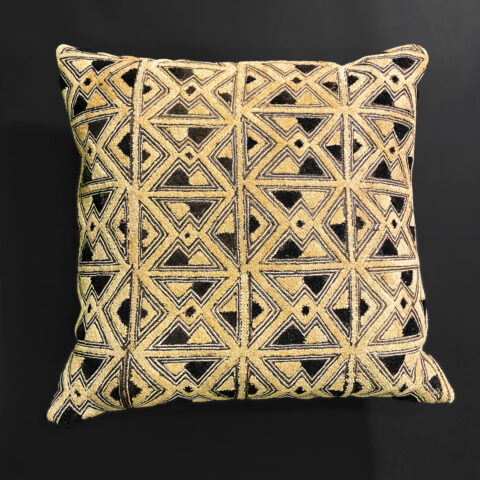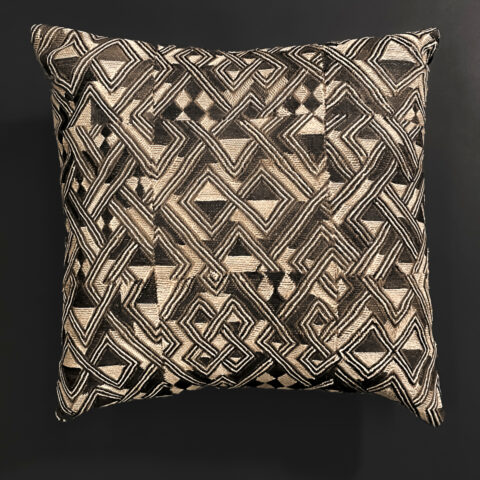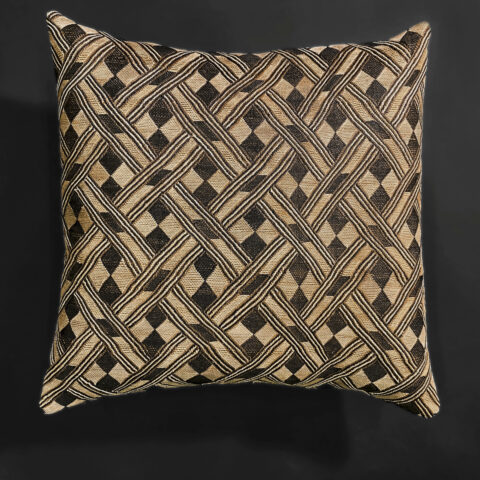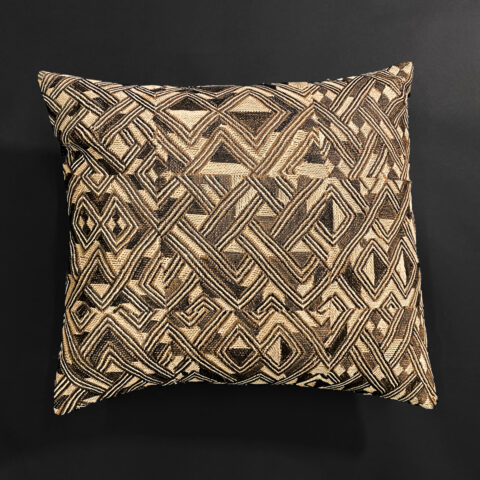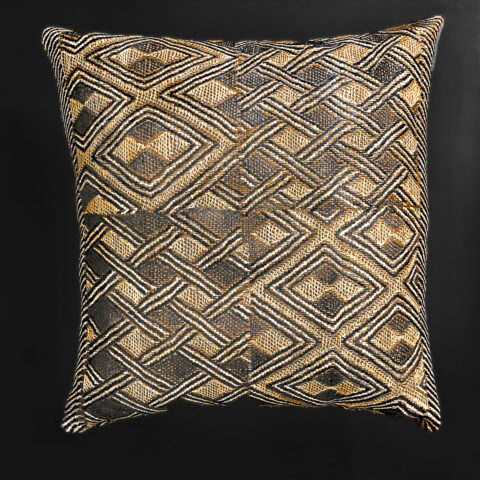Description
A celebration of improvisational brilliance and ancestral rhythm, the “Rhythms of the Kingdom” Raffia Pillow channels the essence of Kuba visual philosophy—where geometry, movement, and cultural memory converge. Handwoven in the heart of the Democratic Republic of Congo from the fibers of raffia palm leaves, this dynamic pillow features an expressive array of checkerboard motifs contained within angular lozenges, their placement intentionally irregular to reflect Kuba ideals of asymmetry and visual tension.
Unlike conventional symmetry in Western design traditions, the Kuba aesthetic values surprise, innovation, and rhythm—a legacy deeply rooted in the performance arts, oral history, and ceremonial regalia of the Kuba people. The overlapping of small squares (nshak) and diagonal lines within each diamond (ikula) is not merely decorative but speaks to the spiritual balance between order and improvisation. The occasional use of indigo blue—rare among Kuba textiles—lends this piece a subtle vibrancy, evoking prestige and cosmological mystery.
The textile process itself is a gendered collaboration: Kuba men weave the raffia panels on narrow looms using centuries-old techniques, while Kuba women, traditionally from noble lineages, embroider the cloth with a vocabulary of motifs passed down through generations. The dyes used—drawn from natural clay, roots, and leaves—offer an organic spectrum of sienna, ivory, charcoal, and ochre, producing a nuanced yet earthy palette.
Under the reign of King Shyaam a-Mbul a-Ngwo in the 17th century, the Kuba Kingdom cultivated an elite class of artisans and textile innovators. These cloths were not only worn as prestige garments but also stored as wealth, traded, and displayed in rituals and rites of passage.
Now reimagined by NOA Living as a luxury home accent, this pillow preserves the spirit of Kuba creativity and translates it into a sophisticated interior object. Its rich textural quality and cultural depth make it an essential piece for collectors of ethnographic art, design historians, and those with a discerning eye for heritage craftsmanship.


